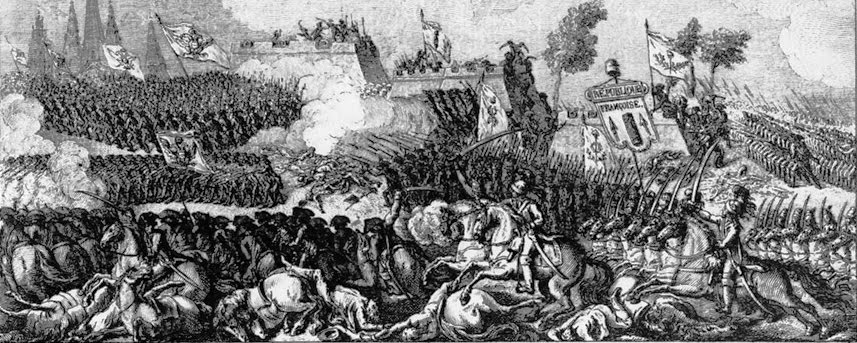Second, the ordre profond was
proposed as a solution to desertion problems. It was largely agreed that the ordre
mince provided too much space for indecision and panic, especially in troops
that did not have the robotic constitution of the Prussian or British line
soldiers. A battlefront which could extend upwards of six miles simply did not
allow for enough supervision to effectively counter desertion.[1] Additionally, the long and
drawn out waits during the battle for deployment, positioning, and
repositioning allowed soldiers hours to reconsider their decision to forfeit
their lives; far too many found the time to decide against such a course of
action. The ordre profond, on the other hand, would not be plagued by
these problems. By grouping troops in a confined mass, soldiers would be held
together and propelled by the momentum of the soldiers beside, behind, and in
front of them.[2]
Folard argued that only those in the front of the column would be susceptible
to panic, yet these soldiers would be forced forward by those behind them. The
soldier in the back ranks, on the other hand, would be unable to see the enemy
and be encouraged by the forward motion of those ahead.[3] Propelled by the swift
action and momentum of the column, soldiers would not have the time to
reconsider, a vital step in countering panic.[4] Caught in the swift
momentum of battle, soldiers would charge towards the enemy before they had the
time to think twice. Meanwhile, swift and decisive victories would prevent
battlefield panic and horrors, giving the soldiers far less reason to desert.
[1] Griffith, French
Napoleonic Infantry Tactics, 7.
[2] Ibidem.
[3] Folard, in
Quimby, 30.
[4] Accordingly,
Frederick the Great claimed that "If my soldiers began to think, not one
would remain in the ranks." Frederick, quoted in John Levi Martin, “The
Objective and Subjective Rationalization of War,” Theory and Society 34,
no.3 (Sept. 2005): 234.

No comments:
Post a Comment